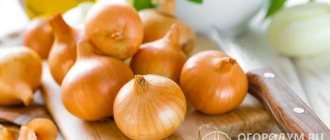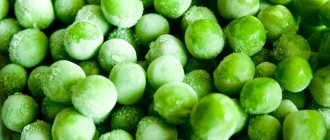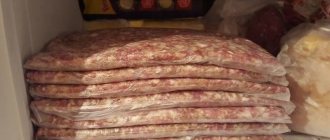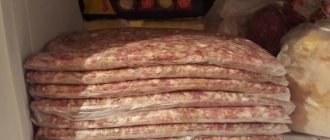Spinach is a real storehouse of nutrients. It is a leader among leafy vegetables in terms of vitamins and microelements. The plant is very popular all over the world; it is eaten both fresh and processed. You can find delicious leaves on the shelves of many supermarkets all year round, but given their cost in the off-season, it is better to freeze spinach for the winter yourself, especially if it grows in large quantities in the country or near the house.
When purchasing bunches of fresh leaves at the market, you need to choose strong, bright greens with elastic petioles
Preliminary work
For freezing, it is best to choose spinach leaves from the very first harvest ; they have a delicate consistency and do not have a bitter aftertaste, unlike leaves collected after the formation of flower shoots.
It doesn’t matter which freezing method is chosen, the greens must be thoroughly washed to remove soil and sand. This can be done by lowering bunches of greenery into a deep container with cold water, and then removing them and thoroughly rinsing each leaf under running water.
All yellowed and wilted leaves must be removed. If the freezing method is used, without blanching, the greens must be dried so that when exposed to low temperatures, excess moisture does not turn into excess, unnecessary ice.
Cooking steps
step 1 First of all, let's prepare our main ingredient for freezing for the winter - spinach. You can safely regulate its quantity yourself: you can freeze one bunch or a dozen at once for testing.
Step 2 First, we get rid of all compactions and too hard stems. After this, carefully rinse the leaves under running water. Dust, dirt and sand can easily get into the recesses, and we also need to get rid of them. Therefore, give this process maximum of your attention and patience.
Step 3 Let the spinach leaves dry, then chop the spinach with a sharp knife into very fine strips as shown in the photo. After this, there are two options for subsequent actions: blanching or direct freezing. Blanching is used mainly to reduce the volume of the harvested product, but if you want to freeze a couple of bunches of spinach for the winter, then it is simply not necessary. To blanch, you need to bring the water in a saucepan to a boil and literally lower the spinach into it for 2-3 minutes. Then you need to form, or rather, roll neat balls from the spinach treated with boiling water and squeeze the water out of them. Such balls must be lightly frozen in the refrigerator and only then packed into bags.
step 4 If you still decide not to blanch the spinach, then put the shredded strips into prepared clean and dry bags, carefully remove the air inside them, and then seal them. We mark the preparations and send them to the freezer.
step 5 Spinach frozen at home for the winter is ready, you can defrost it at any time and cook something tasty and fresh.
Bon appetit!
Freezing whole leaves at home
The stems and roots of the plant need to be cut off.- Sort the leaves, selecting those that are not damaged and approximately the same in shape and size.
- Fold them in small piles for one-time use, ten to fifteen pieces each.
- Twist the leaves, being careful not to damage their integrity and secure with cling film.
- Place the pieces in the freezer at some distance from each other. After complete freezing, you can rearrange the bunches more tightly, while trying to injure them as little as possible.
In this form, spinach can be stored all winter.
We invite you to watch a video about another method of freezing whole spinach:
In ice cubes
Without boiling water treatment
- Chop the spinach using a blender or green shears.
- The resulting raw materials are laid out in ice trays.
- Fill with cold boiled water and put in the freezer.
- After complete freezing, the cubes are transferred to more compact storage in a bag or container.
With boiling water treatment
- Place pre-chopped spinach leaves on a sieve.
- Pour boiling water over it.
- Place in a steamer for a couple of minutes.
- Place the resulting product in ice cube trays and fill with ice water, then freeze.
You can store the preparations obtained by both methods until spring.
Spinach recipes for the winter
There are quite a few recipes for preparing this useful plant, but we will consider only a few methods. All recipes are quite simple and require a minimum of time.
Pickled spinach
The process of pickling greens is the simplest method of harvesting this crop. Before canning you need to prepare the following:
- Spinach;
- Iodized salt.
The proportions are as follows: one part of greens will require at least one tenth of salt. The process itself on how to prepare spinach for the winter is as follows:
- You need to remove the petioles, because only the leaves are salted. They need to be washed well and placed on a towel, thereby drying them.
- Next, you need to prepare the containers by sterilizing them, throw the greens in there and sprinkle salt on top (amply) so that it completely covers them.
- A weight is placed on the leaves so that they sink to the bottom.
- Then the load must be removed, replaced with new leaves and sprinkled with salt. This is done until the jar is full.
- After this, the container should be closed with a lid and sent to a cool place to wait for winter.
For preparation you need:
- Green leaves;
- Water;
- Soda.
Regarding the proportions, everything is 1 to 1.
Preparing canned spinach is very simple; you just need to rinse the greens and then boil them in pre-salted water. You also need to add a little soda to make the liquid softer. Afterwards, it needs to be rinsed again under the tap, dried and wiped using a sieve. The puree should not be too liquid, so that, for example, it does not spread from a tablespoon.
Next, you need to let it cool, put it in jars and put it in the refrigerator, first sealing it with lids.
Of course, in this recipe, soda is by no means the most important ingredient; you can do without it. However, with it, it will remain the same green throughout the winter, but it’s up to you to decide whether you need it or not, based on your own preferences.
Unusual cubes
This recipe is much more complicated, but also more effective. In this case, we have to freeze ice cubes with these greens, but do it correctly. Prepare spinach for the winter at home as follows:
- To begin with, all preparatory procedures are carried out, such as removing excess, washing, drying;
- Next, the green leaves should be cut into small pieces, even medium ones;
- Then scatter them into ice cube trays and fill them, but use boiled water;
- Place the result in the freezer;
- When the water hardens and turns into cubes, you need to transfer them to another container and store them in the freezer.
Frozen this way, it is perfect for stews, soups, and sauces.
Canned sorrel and spinach
To prepare this recipe you need:
- Spinach;
- Sorrel;
- Water (one fourth liter).
The ratio of the first two ingredients is one to two. Take spinach and sorrel leaves, wash them and place them in an enamel bowl. Pour water there in the specified volume. Next, put it on the stove and wait until it boils.
You should not cook for a long time, literally two or three minutes is enough.
What you get needs to be scattered into jars, which must be sterilized, and closed. Preservation is sent for storage in a cold place.
Drying spinach
How to preserve spinach? If you don’t want to bother with greens at all, as an option, you can simply dry the spinach. Green leaves should be washed, dried and placed on sheets of paper at room temperature. The sun should not hit them. It will be much easier if you have a special electric dryer. It is better if the room temperature is 30-35 degrees. If you have a question about how to store spinach after drying it, then everything is simple, in glass jars, in a dark room.
Preparing winter greens for sauces
The recipe is quite simple:
- As usual, rinse and dry the main ingredient.
- Using a blender, puree until you get something like a puree.
- The resulting mixture should be scattered into special ice trays.
- Take the butter and melt it, for example, in the microwave.
- Pour it over the greens and put it in the freezer.
Such cubes can be used, for example, when preparing risotto pasta or various sauces. Sometimes, it is better to use frozen vegetables in a cooked form.
As you can see, you can preserve greens for preparing any dish in winter; for this you can use dried or frozen spinach, or simply for consumption. Harvesting spinach for the winter is a simple process and will not take much time, but will bring many benefits to the body. We recommend this to every housewife who cares about herself and her loved ones.
If these are boiled leaves
Is it possible to freeze not only raw, but also pre-blanched leaves? Yes, you can. The method involves the following steps:
- Place the spinach in boiling water for twenty to thirty seconds;
- then transfer it to ice water;
- remove, let the liquid drain, form small balls from the leaves;
- portion into bags or containers and place in the freezer.
The method is designed to store spinach throughout the year . At the same time, it will not deteriorate and will retain all its benefits.
Photo
In the photo you can see what frozen spinach looks like.
The benefits of frozen food
The benefits of frozen spinach for the body can hardly be overestimated . Thanks to the chemical composition of the leaves, its consumption has a beneficial effect on the human body, reducing the risk of strokes and normalizing blood pressure.
Spinach takes part in hematopoiesis processes and suppresses the active formation of cancer cells. Frozen spinach retains a large amount of vitamin C, which helps prevent age-related decline in vision and iron, making the product indispensable for those who suffer from iron deficiency anemia. Spinach also perfectly supports the immune system, so its use in winter is especially important. Find more information about the benefits and harms of spinach here.
Frozen spinach is a storehouse of vitamins and microelements available all year round . If methods involving pre-heat treatment are used for freezing, some of the beneficial substances are lost. To maximize the preservation of all the unique properties of spinach for the body, it is recommended to choose to freeze whole or chopped leaves without blanching them.
Does caloric content change?
For those who use a diet based on calorie counting, it is important to take into account that the calorie content of spinach after freezing changes upward - 22 kcal per 100 grams of fresh spinach versus 34 kcal per 100 grams of frozen.
Beneficial and harmful properties of spinach
Spinach, frozen or fresh, is used not only in culinary recipes, but also in the preparation of traditional medicine and natural body care cosmetics. The leafy vegetable, due to its rich nutritional value, is one of the healthiest.
| The product's name | Squirrels | Fats | Carbohydrates | Calorie content | Vitamins | Minerals |
| Spinach | 2.80 g | 1.61 g | 1.37 g | 22 kcal | C, K, A, vitamins B, E | Potassium, phosphorus, magnesium, sodium, zinc, copper, iron |
In addition to general health benefits, it affects the body as an anti-inflammatory, diuretic, tonic and cleanser. The vegetable has a beneficial effect on the blood and cardiovascular system - its consumption normalizes hemoglobin levels and prevents heart attacks and strokes. Due to the iron content, the body cells are saturated with oxygen.
Beneficial and harmful properties of spinach
Masks are most often made from spinach (for cosmetic purposes) - they help smooth out wrinkles, remove swelling, and allow the skin to look younger and fresher. The plant is suitable for those losing weight due to its calorie content, protein content and cleansing properties. It naturally removes all harmful substances from the body, and dietary fiber improves digestion.
Spinach can be harmful if eaten frequently, since a large amount of acids can cause gastrointestinal problems. Older leaves must be washed and cooked; consuming them fresh can also negatively affect the digestive tract. Combining milk and spinach is not allowed - this combination leads to stomach upset.
How to use it correctly?
How to properly eat frozen food? Frozen spinach can be added to soups using any method without prior defrosting . To prepare drinks and main courses, the preparations need to be defrosted. Place the spinach in a colander to drain all excess liquid, and then squeeze it out.
If the leaves were frozen entirely and were not pre-treated, then after defrosting, all the same manipulations are done with them as with fresh spinach.
What dishes can I add it to?
The possibilities for using frozen spinach in cooking are incredibly wide . It can be used to prepare sauces, fillings for pies, both salty and sweet, casseroles, soups, vitamin drinks, all kinds of marinades, add to minced meat, and stew along with other vegetables.
Smoothie
Smoothies with frozen greens are prepared using water, juices, as well as yogurt and kefir. To prepare it, it is best to use cubes frozen in ice cube trays. Place the chopped cubes in a blender bowl, add liquid, add other ingredients, and blend. Drink this delicious, healthy, dietary drink for your health!
It's time to say goodbye, but not for long. Tomorrow I will try to please you, my dear readers, with a recipe for lush apple charlotte - “White filling” has been worse than ever for us this year.
I look forward to your comments with joy and impatience. I would be grateful if you send my notes to social networks. Bye everyone and all the best!
Always yours Irina.
It is extremely pleasant that such a bewitching melody bears my name. I adore the sea - after all, I was born on the bluest sea in the world. I love hugs - they speak about love better than any words.
Gary Ayvazian – “Irina” / Michael & Inessa Garmash – paintings
Which method is best for winter storage?
When freezing spinach, you should consider what it will be used for, but in reality it is difficult to settle on any one method. Any of the methods listed in the article allows you to store healthy greens throughout the year, so the best solution would be to use several freezing options at once, which make it possible to widely use spinach in your diet.
| Method | Advantages | Flaws |
| Freezing whole leaves | Simplicity and ease of labor | The product takes up a lot of space in the freezer |
| Freezing crushed leaves | The raw materials are not subjected to heat treatment and retain all useful substances | The rich natural color is partially lost |
| Freezing boiled leaves | Compact blanks that retain natural color | When cooking, some vitamins are lost |
| Freezing in ice cubes with preliminary heat treatment | Ease of use, for soups and smoothies | Some of the benefits are lost when cooked |
| Freezing in ice cubes without cooking | Compactness of preparations, maximum preservation of nutrients | Not convenient to use for making pies and main courses |
| Freezing spinach puree | The product is completely ready for use and retains color perfectly. | When blanching, vitamins and taste are partially lost. |
Spinach is frozen not only because of the desire to enjoy the delicate taste of dishes based on it all winter, but also to maintain health. Eating spinach helps remove waste and toxins from the body and helps you lose weight and improve your overall well-being.
On our website you will find other publications from which you can learn about what types of spinach exist, how it is grown, how it differs from sorrel and what analogues can replace it.
Composition and beneficial properties
Spinach is rich in beneficial microelements. In terms of protein content, it is second only to legumes, but is especially valued by nutritionists for its unique composition: organic, saturated and unsaturated acids, vitamins of all groups, micro and macroelements.
This green contains vitamins A and C. It is resistant to temperature influences, so it is treated with boiling water, or boiled a little for cooking, and there is no fear of loss of useful elements.
Spinach is a healthy vegetable, rich in microelements, protein and organic acids.
Given the large amount of nutrients, spinach is recommended for consumption as a preventative against many diseases. It helps increase hemoglobin due to the iron it contains, strengthens the vascular system, and helps stabilize the digestive system. The product is recommended as a mild diuretic and laxative; it is prescribed to prevent iodine deficiency and improve vision.
The healthiest vegetables are from your own garden. You can read about how to grow spinach in our article.











